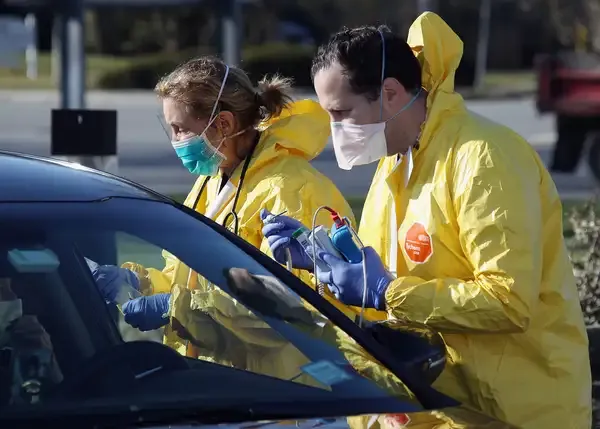- Home >
- Health
- > Epidemiology
Who Can Declare a Pandemic and What Criteria Are Required for an Outbreak to Be Called a Pandemic?
The declaration of a pandemic is typically made by the World Health Organization, based on criteria that include the widespread transmission of a disease across multiple countries and continents, as well as its impact on public health. Meanwhile, the nicknames of cities often reflect their unique characteristics, historical events, or cultural significance. For instance, New York City is known as "The Big Apple" due to its vibrant arts scene and economic prominence, while other cities also have fascinating stories behind their monikers.

The term "pandemic" is often used in public health discussions, but understanding who can declare a pandemic and the criteria required for an outbreak to be classified as such is vital for effective communication and response. This article delves into these aspects, clarifying the roles of various organizations and the essential criteria that an outbreak must meet.
Who Can Declare a Pandemic?
The declaration of a pandemic is typically made by the World Health Organization (WHO), which is a specialized agency of the United Nations responsible for international public health. The Director-General of WHO has the authority to declare a pandemic based on the assessment of the outbreak's severity and spread.
In addition to WHO, national governments can also declare a state of emergency or a pandemic within their borders. This is often done through health ministries or other relevant authorities, depending on the country’s legal framework. Local health departments may also issue declarations for specific regions or cities when necessary.
Criteria for Declaring a Pandemic
For an outbreak to be classified as a pandemic, several key criteria must be met. These criteria help in ensuring a consistent understanding and response across different regions and organizations. Below is a breakdown of the main factors considered:
| Criteria | Description |
|---|---|
| Global Spread | The disease must be widespread, affecting multiple countries and continents. It is not enough for an illness to appear in several nations; it must show sustained human-to-human transmission across borders. |
| Severity | The disease must cause significant illness and mortality. This often includes assessing the case fatality rate and the overall impact on health systems. |
| Human Transmission | There must be evidence of sustained human-to-human transmission. An outbreak with limited human-to-human spread may not qualify as a pandemic. |
| Geographic Distribution | The outbreak should affect a large geographical area. This criterion emphasizes the need for a wide-reaching impact beyond localized outbreaks. |
| Public Health Response | The ability of public health systems to respond effectively to the outbreak is crucial. If health systems are overwhelmed, it can escalate the situation into a pandemic. |
Understanding the Importance of a Pandemic Declaration
Declaring a pandemic has significant implications for public health policy, funding, and international cooperation. It prompts countries to implement emergency plans, allocate resources, and engage in coordinated efforts to control the spread of the disease.
When WHO declares a pandemic, it signals to governments and health organizations worldwide that immediate action is required. This declaration can lead to increased funding for research and development of vaccines and treatments, along with public health messaging aimed at controlling the spread of the disease.
Historical Context: Past Pandemics
Understanding past pandemics can provide insight into how the criteria have evolved. For example, the H1N1 influenza pandemic in 2009 was declared by WHO based on its rapid global spread and significant impact on health. Similarly, the COVID-19 pandemic highlighted the importance of real-time data and global communication in declaring and managing a pandemic.
Throughout history, pandemics have shown that infectious diseases do not respect borders. This has led to an increased emphasis on global health security and preparedness, involving both national and international stakeholders in monitoring and responding to potential outbreaks.
The Role of Communication in Pandemic Response
Clear communication is essential during a pandemic. Authorities must effectively convey information to the public, healthcare providers, and global partners. Misinformation can fuel panic and hinder response efforts, making it crucial to rely on credible sources such as WHO and national health agencies.
Conclusion
Declaring a pandemic is a complex process that involves multiple criteria and the collaboration of various health organizations. Understanding who can declare a pandemic and the criteria involved sheds light on the importance of coordinated global health efforts. As we move forward, maintaining vigilance and preparedness will be crucial for managing potential pandemics in the future.
In summary, the declaration of a pandemic is not a decision taken lightly. It requires careful consideration of the outbreak's spread, severity, and impact. As new infectious diseases emerge, the criteria for declaring a pandemic will continue to be vital in protecting public health and ensuring a swift, effective response.












